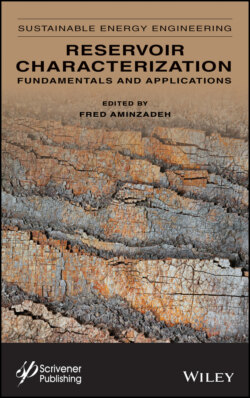Читать книгу Reservoir Characterization - Группа авторов - Страница 39
2.5 Conclusions
ОглавлениеIn this paper we evaluated the closeness of the estimated elastic wave velocities and elastic modulus of a rock sample via Gassmann - Greenberg - Castagna formula to those obtained from laboratory measurements at reservoir pressure.
Estimating the physical parameters of rock samples from Gassmann - Greenberg - Castagna equations at high pressures is farther from the real situation. At high pressure, velocity values are more differentiated from each other and the estimated values are observed to be very far from the experimental (laboratory) values. Although it appears that at higher pressures cracks or fractures get closed, in substituting the fluid, especially brine for supercritical carbon dioxide and water, elasticity values have very high variations, and this very strongly influences the estimated compression wave velocities. And finally, this effect can be seen on the shear wave derived from compression wave. But since the shear wave velocity in the fluid and gas behave similarly, the effect was observed less on this wave.
In the Gassmann assumptions it has been stated that pore fluid will not modify the elastic properties of the rocks. Thus, this theory predicts that shear modulus is not affected by the fluid saturation and will remain constant. In this study, the shear modulus didn’t remain constant during fluid saturation and during the transformation from gas-water saturation state to water saturation state; changes were detected to be around 2 percent. Because of this change in the shear modulus, it makes one hesitate to utilize the Gassmann theory to calculate the velocity. With the calculated and the experimental values of the shear modulus being variable, it can be concluded that Gassmann theory is not accurate for estimating the compressional wave velocity in a saturated state.
The research found that the bulk modulus values obtained from the laboratory experiments show a very weak compatibility with the values calculated using Gassmann formulas. One of the probable reasons for this could be an influence of the transformation of the rock skeleton by brine (salt water). The overall conclusion from these studies is that, for samples saturated in brine at low pressures, good agreement exists between bulk modulus values calculated from Gassmann formula and experimental values obtained in the laboratory. While at high pressures when the rock is very strongly influenced by pressure, this agreement is nonexistent. This change was about 9% at low pressures and at high pressures, these differences reached up to 23%. Therefore, one should contemplate before utilizing Gassmann equation.
